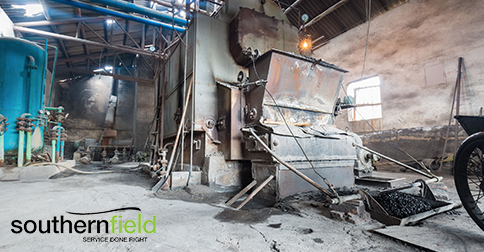The average age of a coal boiler system in the U.S. is well in the double-digit range, with many units across the United States approaching their third and fourth decades – and beyond.
Replacing older boilers with new, more modern systems is recommended if budgets allow, but short of that, there are still strategies a plant can put into place to improve the performance of older boilers – starting with combustion efficiency.
Optimizing Combustion Efficiency in Coal Plants
No plant operates at 100 percent efficiency. Even the most efficient coal-fired plant in the world – an ultrasupercritical unit in Denmark – only operates at 47 percent efficiency. And the national average in the U.S. is much lower, at 37.4 percent.
Of the losses a coal plant experiences throughout normal operation, up to approximately 15 percent can be attributed to boiler inefficiency. That’s with optimal conditions and configurations, however; most boilers are below that figure.
Combustion is the area that has the highest potential for improving efficiency, since that is where the bulk of controllable losses occur. While a not-insignificant percentage of controllable combustion losses have to do with fuel conditions, much of the loss experienced can be mitigated through smart combustion optimization.
How Coal Boiler Maintenance Provides the Key
Coal boiler maintenance is one of the best ways to assess your situation and see what improvements can be made. It starts with proper monitoring, which can include analyzing:
- Fuel-air distribution
- Firing system components
- Furnace exit gas temperature
- Boiler cleanliness
- Loss on ignition through fly ash sampling
- Boiler exit gases at the boiler outlet
- Large particle ash carryover
- Boiler tube temperature
Monitoring can give operators an accurate representation of conditions within the combustion environment. Without knowing what conditions exist, it’s virtually impossible to improve the combustion cycle through retrofits and upgrades, and achieve desired efficiency targets.
There are also improvements a plant can make to its maintenance practices, such as:
- More thorough operations and maintenance training
- Computerized maintenance control
- Distributed control systems
- Preventative maintenance over breakdown maintenance
- Regularly planned maintenance sessions at frequent intervals
- Ongoing performance testing
Maintenance can increase efficiency and prolong boiler life if planned and executed properly and regularly. This is particularly true for a boiler’s crucial – but often delicate and overlooked – combustion components. Since combustion is so integral to a boiler’s rating, maintaining these parts is of the utmost importance.
At some point in the lifespan of a coal plant, upgrades and retrofits will need to happen. But in the meantime, you can get more life from your coal boiler system and its combustion equipment if you employ best practices for timely, proactive, preventative maintenance.


